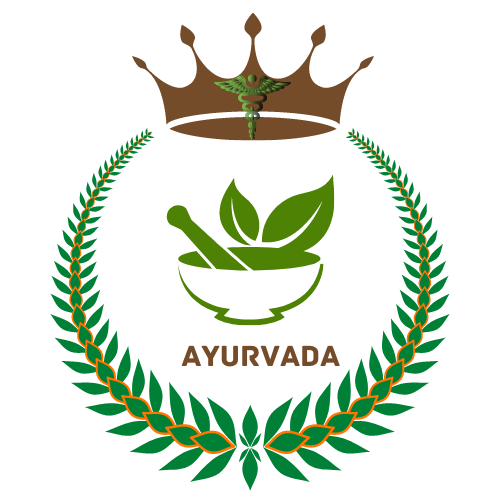
HISTORY
Ayurveda is a traditional system of medicine that originated in India over 5,000 years ago. It focuses on achieving balance and harmony in the body, mind, and spirit through natural remedies, diet, and lifestyle practices. Ayurveda believes that each person has a unique combination of three doshas – Vata, Pitta, and Kapha – and imbalances in these doshas can lead to health issues. Treatment in Ayurveda involves personalized recommendations based on an individual’s dosha, including herbal remedies, dietary changes, meditation, and yoga. It is a holistic approach to health and well-being.
TYPES OF DOSHAS
- VAADHA
- PITTHA
- KAABHA
Vaadha dosha is one of the three fundamental bio energies, or doshas, in Ayurveda, an ancient Indian system of medicine. Vaadha is the energy that is associated with movement and is responsible for the regulation of all bodily functions. It is made up of the elements of air and space.
In Ayurveda, each individual is believed to have a unique constitution, or Prakriti, which is determined by the proportions of the three doshas in their body. When vaadha is in balance, it promotes good health and vitality. However, when it is imbalanced, it can lead to various physical and mental health issues.
Pittha dosha is one of the three doshas in Ayurveda, the ancient Indian system of medicine. It is often referred to as the "fire" dosha because it is associated with the qualities of fire: hot, sharp, intense, and transformative. Pittha is responsible for all the metabolic and enzymatic processes in the body and is involved in the digestion, absorption, and transformation of nutrients.
Physically, pittha dosha governs the transformation and metabolism of food, regulating digestion, absorption, and nutrient assimilation. Pittha is responsible for maintaining body temperature, regulating hormones, and controlling metabolism. People with a dominant pitta dosha generally have a medium build, a strong appetite, and good digestion
Kaabha dosha is one of the three doshas in Ayurveda, the traditional system of medicine from India. It is associated with the elements of earth and water and is responsible for the structure, stability, and lubrication of the body.
People with a dominant Kaabha dosha tend to have a strong, sturdy build and a calm and nurturing nature. They usually have a slower metabolism and may have a tendency to gain weight easily. Kaabha individuals often have soft, smooth skin and thick, lustrous hair.
CHARACTERISTICS OF DOSHAS
- VAADHA
- PITTHA
- KAABHA
People with a predominantly Vaadha constitution tend to have certain physical and mental characteristics. Physically, they may have a thin build, dry skin, and hair, and may be prone to cold hands and feet. Mentally, they are often creative, energetic, and quick-thinking. They may also have a tendency towards anxiety, worry, and restlessness.
Mentally and emotionally, Pittha is associated with qualities such as intelligence, determination, and ambition. When in balance, pitta individuals are sharp-minded, focused, and goal-oriented. However, excess pitta can lead to qualities like anger, irritability, and impatience. They are naturally competitive and may push themselves and others to achieve success.
Kaabha dosha promotes strength, endurance, and stability. It provides nourishment to the tissues and supports overall health and vitality. Kapha individuals are generally calm, compassionate, and grounded. They have a strong immune system and are less prone to illnesses.




TREATMENTS
Ayurvedic treatment is a holistic approach to healthcare that originated in ancient India thousands of years ago. It is based on the belief that health and wellness depend on a delicate balance between the mind, body, and spirit.
One of the fundamental principles of Ayurveda is that each individual is unique, with their own specific constitution or “dosha.” There are three main doshas: Vaadha(air and space), Pittha (fire and water), and Kaapha (water and earth). Each person has a dominant dosha, and maintaining its balance is essential for overall well-being.
COMMON TECHNIQUES OF AYURVEDHA
- DIET AND NUTRITION
- HERBAL MEDICINE
- YOGA AND MEDITATION
- AYURVEDIC MASSAGE AND BODYWORK
- PANCHAKARMA
Ayurveda emphasizes the importance of eating according to one's dosha. It prescribes specific foods, spices, and herbs to balance the doshas and promote digestion and overall health. For example, a person with a Pittha dosha might be advised to avoid spicy and acidic foods and opt for cooling and calming foods instead.
Ayurvedic practitioners use a wide range of herbs and plants to treat various ailments. These herbs are believed to have specific properties that can restore balance and promote healing. Commonly used Ayurvedic herbs include turmeric, ashwagandha, Triphala, and neem.
Ayurveda recognizes the importance of mental and emotional well-being. Yoga and meditation are frequently recommended practices to calm the mind, reduce stress, improve flexibility, and promote overall balance. Different yoga poses and breathing techniques are prescribed based on an individual's dosha.
Ayurvedic therapies often involve various types of massage and bodywork to improve circulation, release toxins, and promote relaxation. Abhyanga, an Ayurvedic full-body massage using warm oils, is a popular therapy that helps balance the doshas and rejuvenate the body.
Panchakarma is a detoxification and rejuvenation procedure that aims to eliminate toxins, restore dosha balance, and improve overall health. It involves a series of therapies like oil massages, steam treatments, and herbal enemas, customized according to the individual's needs.

